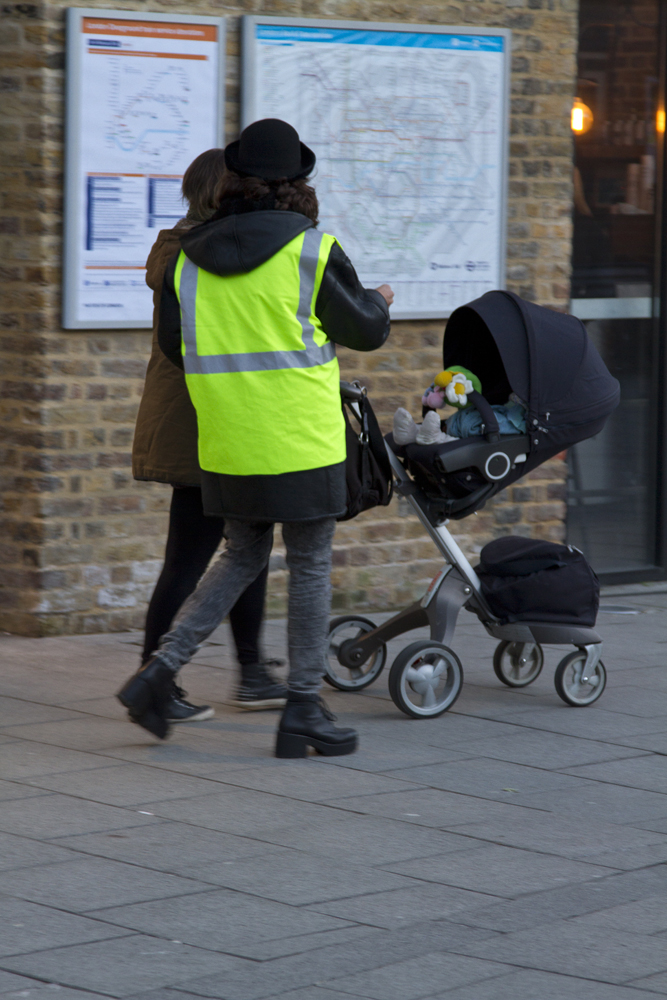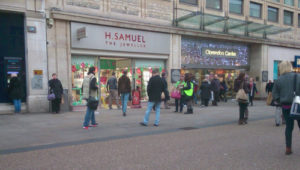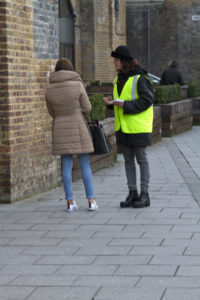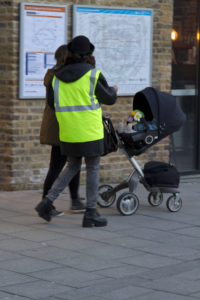I wore a reflective yellow jacket as other people in the street were wearing uniforms. I choose to give away postcards, the same way others were given away leaflets. I wanted to approach people in a commercial high street as a gesture that would signify how existential questions are rarely asked in a society in which we are consuming without questioning.
‘Why are we big on the inside and small on the outside?’ is related to the idea of freedom; our inner expanded realm often clashes with the way our beings are defined within society, our outer ‘package’ doesn’t really describe or make justice to the vast and rich realm of our inner lives. I was interested in the absurdity of handing out this question in a place of no questioning. Through this gesture I wanted to give the possibility to open up a thinking space by shifting the perception of people who are normally bombarded by advertisements.
2)
I found myself carefully approaching members of the public looking for easy targets. I was rejected several times but I was also able to engage in quite deep conversations. A woman, thinking I was handing out leaflets about religion, rejected the postcard to then return it. She was surprised by the simplicity of the gesture and kept it. Generally people could not work out what they were sold but it made people think, it slowed them down even just for a moment.
3)
Artists that engage in ephemeral events challenge the associations we have with a particular space by using vernacular materials of everyday life as material itself. Carpark by Nina Katchadourian, Steven Matheson and Mark Tribe transforms a car park in which individual drivers compete for space in a participatory game by using the existing conditions. Adrian Piper highlights the forces that are already happening in the space by intervening individually and by considering the psychology of public space and its dynamics. Moreover, in Gotham Handbook, Sophie Calle under Paul Auster instructions takes over something that is highly public and makes the experience of engaging with a public telephone booth more intimate and pleasant for people. So by taking action in a commercial high street through giving out a philosophical question, I wanted to highlight the forces of advertisement and passive consumption and transform the place in an active thinking space. The gesture of everyday public leafleting became the opportunity for intimate existential conversations that transformed the quality of exchanges and interactions in connection to that particular context. By using the existing conditions I indented to shift the perception people have of a place or a gesture and to open up a space in which the public become participant and has the choice to think and question.





